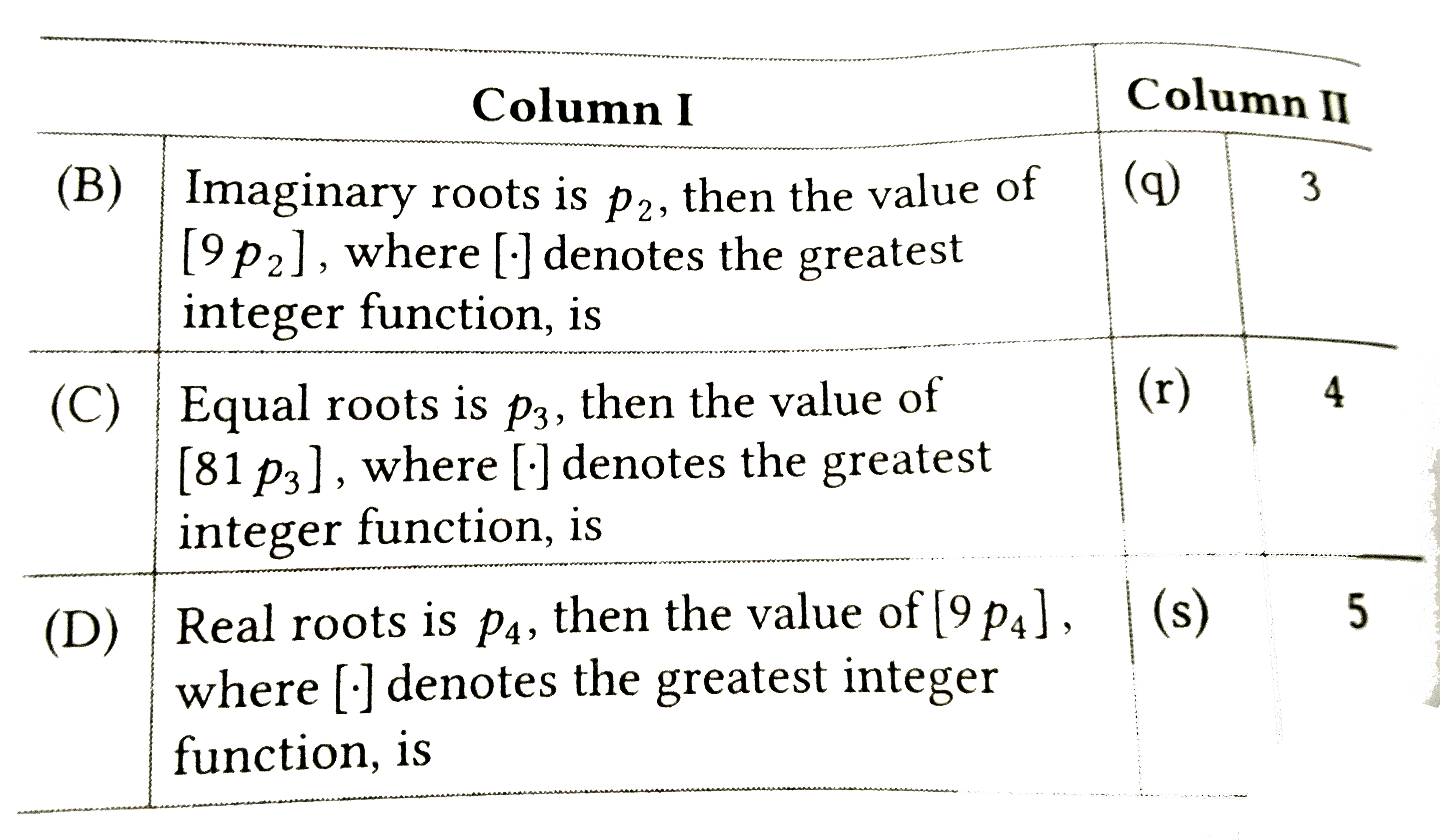Two integers xandy are chosen with replacement out of the set {0,1,,2,3,.....10}. Then find the probability that |x−y|>5.
To solve the problem of finding the probability that the absolute difference between two integers x and y chosen from the set {0,1,2,…,10} is greater than 5, we can follow these steps:
Step 1: Define the Sample Space
The integers x and y can each take any value from the set {0,1,2,…,10}. Since there are 11 elements in this set, the total number of outcomes when choosing x and y with replacement is:
Total outcomes=11×11=121
Hint: Remember that when selecting with replacement, the choices for x and y are independent.
Step 2: Identify the Condition
We need to find the probability that |x−y|>5. This can be expressed in two inequalities:
1. x−y>5
2. y−x>5 (which is equivalent to x−y<−5)
Step 3: Analyze the Inequalities
1. For x−y>5:
- This implies x>y+5.
- The possible values for y range from 0 to 4 (since if y is 5 or more, x would exceed 10).
- For each value of y:
- If y=0, x can be 6,7,8,9,10 (5 options).
- If y=1, x can be 7,8,9,10 (4 options).
- If y=2, x can be 8,9,10 (3 options).
- If y=3, x can be 9,10 (2 options).
- If y=4, x can be 10 (1 option).
- The total number of favorable outcomes for this case is:
5+4+3+2+1=15
2. For y−x>5:
- This implies y>x+5.
- The possible values for x range from 0 to 4 (similar reasoning as above).
- For each value of x:
- If x=0, y can be 6,7,8,9,10 (5 options).
- If x=1, y can be 7,8,9,10 (4 options).
- If x=2, y can be 8,9,10 (3 options).
- If x=3, y can be 9,10 (2 options).
- If x=4, y can be 10 (1 option).
- The total number of favorable outcomes for this case is also:
5+4+3+2+1=15
Step 4: Calculate Total Favorable Outcomes
The total number of favorable outcomes where |x−y|>5 is:
15+15=30
Step 5: Calculate the Probability
The probability P that |x−y|>5 is given by the ratio of the number of favorable outcomes to the total outcomes:
P(|x−y|>5)=Number of favorable outcomesTotal outcomes=30121
Final Answer
Thus, the probability that |x−y|>5 is:
30121
---
The integers x and y can each take any value from the set {0,1,2,…,10}. Since there are 11 elements in this set, the total number of outcomes when choosing x and y with replacement is:
Total outcomes=11×11=121
We need to find the probability that |x−y|>5. This can be expressed in two inequalities:
1. x−y>5
2. y−x>5 (which is equivalent to x−y<−5)
1. For x−y>5:
- This implies x>y+5.
- The possible values for y range from 0 to 4 (since if y is 5 or more, x would exceed 10).
- For each value of y:
- If y=0, x can be 6,7,8,9,10 (5 options).
- If y=1, x can be 7,8,9,10 (4 options).
- If y=2, x can be 8,9,10 (3 options).
- If y=3, x can be 9,10 (2 options).
- If y=4, x can be 10 (1 option).
- The total number of favorable outcomes for this case is:
5+4+3+2+1=15
- This implies y>x+5.
- The possible values for x range from 0 to 4 (similar reasoning as above).
- For each value of x:
- If x=0, y can be 6,7,8,9,10 (5 options).
- If x=1, y can be 7,8,9,10 (4 options).
- If x=2, y can be 8,9,10 (3 options).
- If x=3, y can be 9,10 (2 options).
- If x=4, y can be 10 (1 option).
- The total number of favorable outcomes for this case is also:
5+4+3+2+1=15
The total number of favorable outcomes where |x−y|>5 is:
15+15=30
The probability P that |x−y|>5 is given by the ratio of the number of favorable outcomes to the total outcomes:
P(|x−y|>5)=Number of favorable outcomesTotal outcomes=30121
Thus, the probability that |x−y|>5 is:
30121
Similar Questions
Two integers x and y are chosen with replacement out of the set {0, 1, 2, . . . 10}. The probability that |x - y| doesn't exceed 5 is
View SolutionTwo natural numbers x and y are chosen at random from the set {1,2,3,4,...3n}. find the probability that x2−y2 is divisible by 3.
View SolutionTwo numbers b and c are chosen at random with replacement from the numbers 1, 2, 3, 4, 5, 6, 7, 8 and 9. Find the probability that x2+bx+c>0 for all x∈R.
View SolutionIf two distinct numbers m and n are chosen at random form the set {1, 2, 3, …, 100}, then find the probability that 2m+2n+1 is divisible by 3.
View SolutionTwo numbers xandy are chosen at random (without replacement) from among the numbers 1,2,3,2004. The probability that x3+y3 is divisible by 3 is (a) 13 (b) 23 (c) 16 (d) 14
View SolutionTwo numbers a and b are chosen at random from the set {1,2,3,4,...,0} with replacement. The probability that the equation x2+√2(a−b)x+b=0 has


View SolutionTwo numbers a and b are chosen at random from the set {1,2,3,..,3n}. The probability that a3+b3 is divisible by 3, is
View SolutionTwo distinct integers x and y are chosen, without replacement, at random from the set {x,y∣0≤x≤10,0≤y≤10 , x and y are in integers} the probability that |x−y|≤5 is :
View SolutionTwo numbers a and b are selected successively without replacement in that order from the integers 1 to 10.The probability that ab is an integer, is
View SolutionThree numbers are chosen at random without replacement from {1,2,3,....10}. The probability that the minimum of the chosen number is 3 or their maximum is 7 , is:
View Solution
